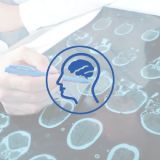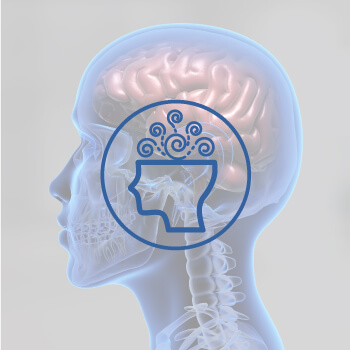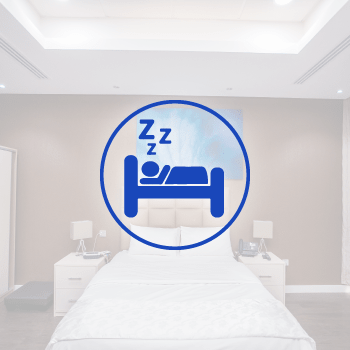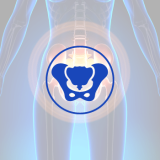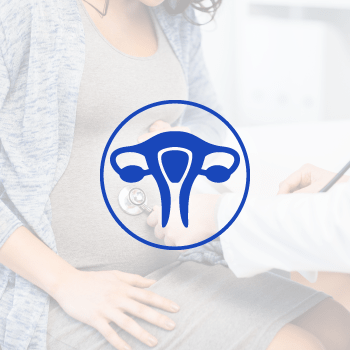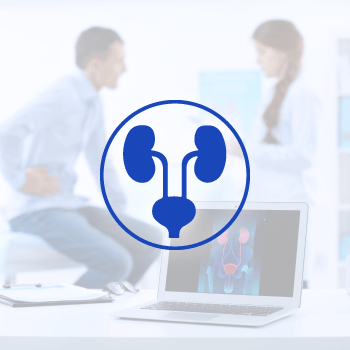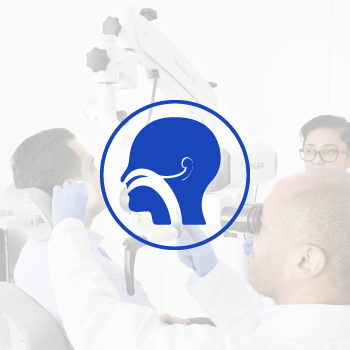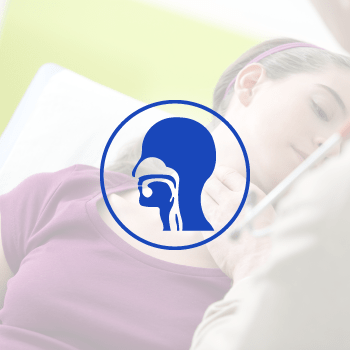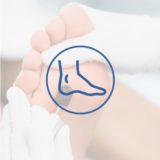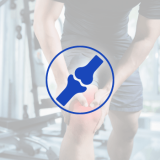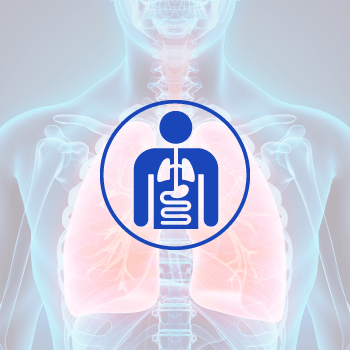COLORECTAL CLINIC
Diseases of the intestinal tract including its terminal part, defined as ano-rectum, are very common in the general population. Symptoms and signs of those conditions may at time be very subtle and variable while the vast majority of conditions are easily diagnosed and treatable by expert physicians. Medicine and Surgery of intestinal tract have remarkably evolved over the last decade and it truly became a highly specialized field practice. In the most advanced practice settings, physicians taking care of gastro-intestinal conditions work closely with surgeons specialized in performing surgeries in the same field. In many circumstances the best care to the patient can only be assured by a combined and multidisciplinary approach provided by gastroenterologist and surgeon. This is what we offer at Harley Street Colorectal Clinic: team work, expertise and quality of care that we have learnt and practiced throughout our entire career spent in some of the most renowned European institutions.
SERVICES:
- Hemorrhoids
- Anal Fissure
- Anal fistula
- Endoscopy
- Pelvic Floor Disorders
- Hernia Repair
- Pilonidal Sinus Treatment with Flap
- Soft Tissue Surgery
- Acute & Chronic Anal Pain
Piles or hemorrhoids are vascular cushion in the anal canal, which are contributing with the anal muscles, called anal sphincters, to maintain continence to stool and gas. At times and for different reasons haemorrhoids can become swollen. When veins in the lining of the anus and rectum become enlarged, they are filled with excess blood, and cause the underlying tissues to also swell, forming abnormal lumps. It occurs at any age but most commonly in individuals over 50 years of age.
Hemorrhoids are classified into two types. They include:
- Internal hemorrhoids: These are swellings that develop inside the anus. You may not be able to see or feel them. Sometimes, they may protrude through the anus to form external hemorrhoids.
- External hemorrhoids: These are swellings that develop outside the anus while passing stools. You may be able to see and feel them. Formations of blood clots in external hemorrhoids are called thrombosedhemorrhoids and are extremely painful.
Piles are caused due to excessive abdominal pressure from standing or sitting for long periods, being obese, pregnancy and straining during constipation. Diet plays an important role in causing and preventing piles. People who consume more processed food, and less fibre and fluids may develop piles as a result of producing hard stools and straining during bowel movements.
An anal fissure is a tear in the skin around the opening of the anus (the last part of the digestive tract that controls the removal of stools). An anal fissure is associated with pain and bleeding during bowel movements. The condition is more common in young infants but it can happen at any age. Anal fissures are usually caused by trauma or injury to the anal canal while passing hard or large stools, constipation, diarrhoea or childbirth.
Most anal fissures can be diagnosed by a physical examination which involves viewing the anal region and reviewing your medical history. In some cases, diagnosis is done by digital rectal examination or using an instrument called an anoscope. The anoscope is a short instrument with a lighted tube which can help the doctor view and examine the fissure.
Anal fissures usually heal on their own in a few days or weeks (acute), but in cases when it doesn’t heal even after 6 weeks (chronic), medical treatment or surgery is recommended.
Treatment usually involves adopting simple measures to keep your stool soft such as by increasing fibre and fluid intake. Soaking in warm water for 10 – 20 minutes as often as possible, particularly after bowel movements, also helps with healing and reducing discomfort. If symptoms still persist, further treatment is required which involves initially using special cream based on Diltiazem and in case of no success injection of botulin toxin into internal anal sphincter. Topical anesthetics and pain medication may also be prescribed to control pain.
Historically surgery is recommended if the symptoms do not respond to conservative treatment. A procedure called Lateral internal sphincterotomy as been the mostly used intervention for this type of problem although the results in the immediate and long-term were not very good especially because the procedure is associated to a degree of new onset of anal incontinence caused by the fact that the sphincter muscle is divided for a certain amount of its length. For the above-mentioned reason sphincterotomy has been completely abandoned by this practice. Fissurectomy , which involves surgically removing the anal fissure leaving an open wound to heal naturally, may be a times utilized to promote and more rapid healing of the fistula associated to the injection of botulin toxin
The most common treatment option adopted by this practice is definitely the injection of botulin toxin into the internal anal sphincter. This procedure is either done under deep sedation or general anesthesia. It is a fully day cases procedure which does not require overnight stay. The procedure is always associated to a local anesthetic injection called pudendal block, which is performed after completing the injection of the bottoming toxin into the internal anal sphincter. The entire procedure does not last more than 5 minutes but deep sedation or general anesthesia are required in order to control the pain codes by the injection interval and area which is a radiates very sensitive to the spasm of the anal sphincter.
The anus is an external opening through which feces is expelled out of your body. There are a number of small glands inside the anus. These glands may sometimes get blocked and form an infected cavity called an abscess. Often, anal abscesses further develop into an anal fistula. An anal fistula is a small channel or tunnel that develops from the infected gland and opens out onto the skin near the anus.
Some fistulae have only one opening, while others are branched out into many openings. Fistulae may sometimes be connected to the sphincter muscles, the muscles that open and close the anus. The ends of the fistulae look like holes on the surface of the skin around the anus. Anal fistulae are commonly treated through surgery.
We offer the best available technology on the market to assure that the quality of our endoscopic procedures is very accurate in term of detection of possible abnormalities and comfort for the patients. In particular we offer
- HD endoscopy, which allows the most detailed image definition;
- Narrow banding Imaging, which allows enhanced and more detailed view of the mucosa of the intestine making the detection of polyps easier and therefore reducing the chance of missing lesions during the procedures;
- CO2 insufflation endoscopy instead of using atmospheric air for inflation during the procedure. CO2 is a gas that has the property of diffusing through the intestine wall and getting absorbed, reducing therefore the occurrence of bloating and abdominal distension after the procedure.
What is a Pelvic Care Center?
It is a highly specialized facility where different specialists work together to offer multidisciplinary care to patients complaining of various diseases or conditions affecting the pelvic organs. The pelvis is the anatomical area where different organs, such urinary bladder/urinary structures, reproductive organs, rectum and anus are localized which are usually treated by a single specialist according to the most prevalent type of symptoms that the patient is complaining of. In many circumstances pelvic organs belonging to different systems such as Intestinal, Urinary and Reproductive organs may be affected at the same time and therefore in order to achieve better and more comprehensive care, a multidisciplinary approach is the only solution in order to effectively improve a patient’s condition.
A hernia is a bulge formed when the internal organs of your abdominal cavity are pushed through a weakened spot in your abdominal wall. Hernias most commonly occur between the area of your rib cage and the groin.
An inguinal hernia is a bulge that forms when a part of your small intestine or fatty tissue protrudes through a weak spot in the groin (area between the upper thigh and lower abdomen) or scrotum (muscular sac containing male testes). Inguinal hernias occur more commonly in men than women. There are two types of inguinal hernia:
- Indirect inguinal hernia
Most inguinal hernias are caused when the walls of the abdominal muscles fail to close before birth. It commonly occurs in males because of the way the reproductive system develops. Before birth, the testicles are formed within the abdomen and slowly descend into the scrotum through the inguinal canal. The inguinal canal is closed after birth, preventing the testicles from moving back into the abdomen, but leaving enough space for the spermatic cord to pass through. Weakness in this region can lead to the formation of a hernia. The risk of indirect inguinal hernia is higher in premature infants as the baby does not get enough time in the womb for the closing of the inguinal canal.
- Direct inguinal hernia
The abdominal wall may become weaker in later life due to tissue degeneration and result in an inguinal hernia. Pressure on the weak spot due to coughing, straining, or lifting heavy objects can cause a bulge in the groin. Being overweight or undergoing a prior surgery is also a risk factor for inguinal hernia.
The word pilonidal means a nest of hairs, and a sinus tract is an abnormal narrow channel or cavity in your body. Pilonidal sinuses are infected tracts beneath your skin that predominantly occur at the end of your tailbone, an area called the natal cleft where the buttocks separate. Although less common, a pilonidal sinus can also occur between your fingers and in your belly button and may present with more than one channel or sinus tract.
The exact cause of pilonidal sinus is unknown. It is believed that ingrown hairs combined with changing hormones (pilonidal sinuses occur after puberty), friction (sitting for a long time or from clothing), and infection (ingrown hair and friction can irritate the skin and cause inflammation leading to bacterial invasion) contribute to pilonidal sinus.
Pilonidal sinus is found more commonly in young adults and occurs most often in men as they have more body hair than women. Having a sedentary job which requires a lot of sitting, obesity, having a deep hairy natal cleft, or a family history of pilonidal sinuses can make you more prone to this condition.
Common skin and soft tissue problems
Skin and soft tissue are protecting and wrapping body’s deeper structures, providing also adequate support and important functions for maintaining the skin efficient and functional. These structures are effectively a specialized organ of our body, which is differentiated in various types of cells providing different functions: some of the most important are producing hair to enhance protection and reduce friction, secreting sebous which is the natural moisturizer of the skin and sweat contributing to termo-regulation of the body. Common diseases of the skin and the underneath layer called sub-cuticular space are commonly represented by benign growth which may be moles, cysts, enlarge lymphatic nodes and in some circumstances also localized infections defined as cellulitis and abscesses. Surgery for such conditions aims to resolve the problem either through surgical removal of the growth or in case of presence abscess, to achieve local drainage of the collection in order to control and resolve the localized infection to avoid its further spreading. Diseases of nail are also very common and they are mainly represented by abnormal in-growing of the nail into the skin edge causing localized chronic infection and pain. Here is the list of the most common conditions/procedures that we routinely perform for soft tissue or skin problems.
Surgery for In-growing toe nail
This condition is very common especially young population and it consists and a chronic infection of one or both nail edges usually localized on the big toe. This condition is usually caused by improper nail clipping at the edges or it may due to a excessive anatomical curvature of the nail which may predispose to become in-grown at the edges. Once the nail is growing into the nail edge it may cause infection either acute but more commonly chronic with considerable amount of pain and local discharge. The treatment for such a condition consists in partial avulsion of the nail, usually a very narrow strip of nail, with excision of the matrix of the nail itself to prevent re-growing in that area which will definitely cause recurrence of the condition and also excision of the overlapping granuloma with re-modeling of the nail’s skin wedge. The excision of the matrix of the nail is performed with a small incision at the base of the nail, which is then sutured with 1 single stitch, which is then removed 5 days after the procedure. In adult people and kids older than 8 years, this surgery is done in the office under local anaesthesia, through a digital nerve block consisting in one single injection of local anesthetic at the base of finger. A rubber tourniquet is then applied at the base of the finger in order to reduce the blood supply and surgery is performed accordingly. Duration of surgery is around 15 minutes. A slightly compressive dressing is applied at the surgical site, which is usually un-done after 24 hours when the patient is seen in clinic as part of the postoperative follow-up. Patients are usually advised to keep the foot elevated as much as they can for the first 24 hours after surgery with some local intermittent ice packing and also to take a regular painkiller medication for the immediate postoperative period. Full recovery after the operation is usually achieved in 1 week time when the patient is usually able to wear shoes as normal. Surgery for in-growing toe nail, if done accurately presents very low complications although the risk of infection is the only real postoperative occurrence.
Excision of skin lesion or cysts
Superficial skin lesions or lump localized in the sub-cuticular space usually consists with cystic lesions or benign tumor such as most commonly lipomas (fat tissue masses) or c. Such lesions are usually removed surgically with small incisions according to the lesion size. These types of procedures, unless lesions are very large, are usually performed in the office under local anesthetic. Excision or biopsy of lymph nodes mainly at the groin site are more commonly done under general anesthesia in the OR depending on the size of the lesion. When the procedure is done in the office, loocal injection of anesthetic is given and it allows a perfect control of pain during the procedure. Once the lesion is removed is preserved into a special fluid and sent for histopathology examination. Results usually become available 5-7 day after the procedure. The closure of the skin after the lesion or the cyst is removed happens with absorbable suture material without any external stitching which need to be removed after later stage. This type of skin suturing allows for the best cosmetic results and also minimizes the patient discomfort, as there is no requirement of removing suture material at later stage. These types of procedure are usually very safe and with low complication rate. Cyst or lesions localized on the scalp don’t usually require preoperative hair removal and the patient will barely notice the presence of the suture at the surgical site after surgery. In the vast majority of the circumstances special glue called Dermabond is applied instead of the traditional dressing. This glue seals perfectly the surgical wound and allows the patient to have shower without any compromising the integrity of the suture line. Depending on the anatomical location of the surgical site, physical activity may be resumed immediately after surgery or instead after short period of interruption, as per doctor’s recommendations.
Any other condition not listed above, which requires specific intervention, will be discussed with the patient at the time of the consultation and further instruction will be provided accordingly.
How do we assess and treat anal pain?
Before proceeding to any treatment in patient with acute and chronic anal pain is crucial to achieve the correct diagnosis and understand the true underlying reason which is responsible for this condition. Anal pain either acute or chronic may have different causes. I some circumstances patient present with pain as main symptom without any evidence of anal abnormalities. How do we establish the right diagnosis? The first step is obtaining complete past medical and surgical history and to understand if there is any trigger or predisposing factors that may have initiated the pain cycle. Some of the most important factors are
- Acute constipation with excessive straining during defecation.
- History of chronic constipation with repeated excessive straining.
- History of single or multiples anal surgeries .
- History of single or multiple vaginal deliveries.
- History of prolonged labors or complicated vaginal deliveries.
- History of pelvic or sacral trauma.
It is also important to objectively assess the impact and relevance of that the pain and associated symptoms may have on the patient quality of life. For this purpose, we request the patient during or before the consultation to fill validated questionnaires which may help us to understand patient’s specific circumstances.
Physical examination including internal and the sternal assessment of the anal area is performed as initial step to understand and rule out the presence of any associated conditions that may be responsible for the patient’s symptoms. External examination would also include sensory blunt stimulations (Q-tip test) of the perianal and perineal area to map the pain territory distribution. Internal examination is performed whenever possible to establish is the compression of specific anatomical area triggers the onset of pain. Anoscopy is also performed to allow direct inspection of distal rectum and anal canal
The most common tests that are performed to investigate this condition are
- High resolution Anorectal manometry which allow to define pressure of anal sphincter and distal rectum during resting, voluntary contraction and bearing down. This test is very detailed and is also able to identify incoordination of the anorectal segment during bearing down which may be the underlying cause of chronic anal pain in patients presenting with symptoms of excessive straining and difficult defecation. You can see how the test presents in its final lay out reporting different resting, working and sensory phases
How do we treat anal pain?
Depending of the final diagnosis certain specific treatment are available to relieve the patient from pain and the most common are
- Chemodenervation of Internal Anal Sphincter with Botulin Toxin is performed in the early phases of anal pain when anal spasm is identified during Anorectal Manometry
- Pudendal Nerve anesthetic block under neurophysiological guidance is an office procedure done under local anesthesia where a needle connected to a special neuro-stimulating device allows the precise localization of the pudendal nerve followed by the injection of local anesthetic agent that blocks the sensory component of the nerve and therefore relief pain. This block as it temporary is also called test block but the duration and effect may be variable and in some patient its effect may be long-lasting. In the vast majority of patients, the effect only last for few days and then returns the usual levels. Despite that, a successful test block even for just few hours is a strong predictor of success another procedure we use to block the nerve for a longer period called Pulsed Radiofrequency.
- Pulsed radiofrequency is similar to the previous procedure as pudendal nerve is always reached via percutaneous injection under local anesthesia using the same neuro-stimulating device. When the nerve is reached a controlled thermal energy delivered by pulsed radiofrequency is applied to the nerve achieving a gentle heating, which ablate the sensory component of the nerve. The effect is long lasting usually from 4 to 24 months.
- Medical treatment is also utilized in addition or as substitute of nerve block in case of milder symptoms or contraindication to the above described procedure. Different medication effective on chronic pain may be used according to the doctor indications

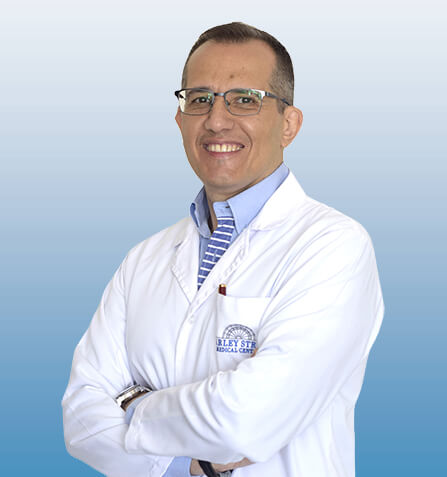
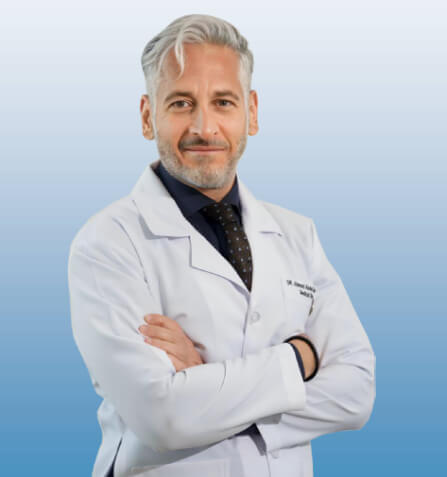
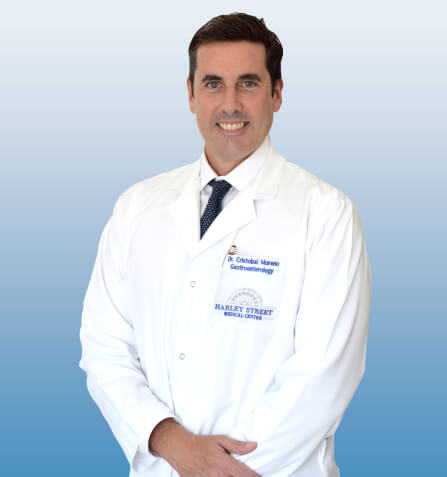
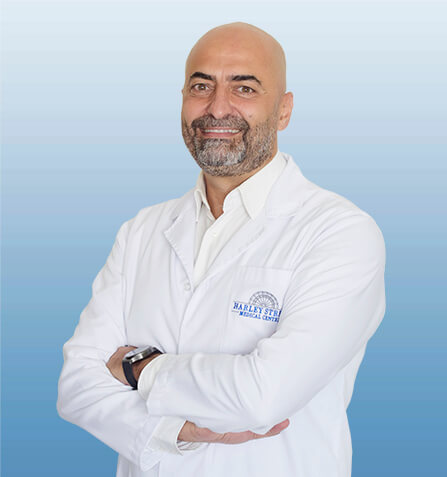

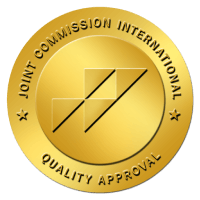
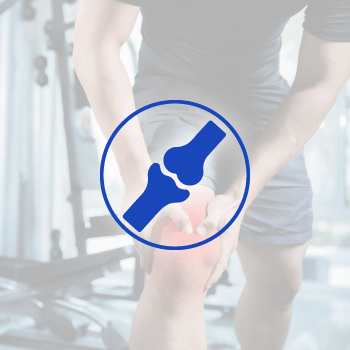 أنقر هنا
أنقر هنا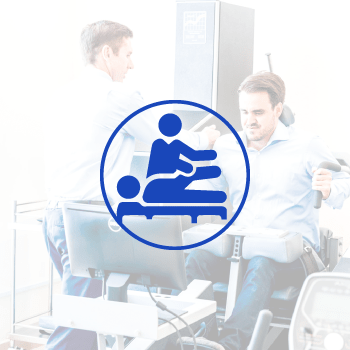 أنقر هنا
أنقر هنا